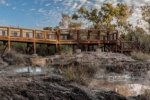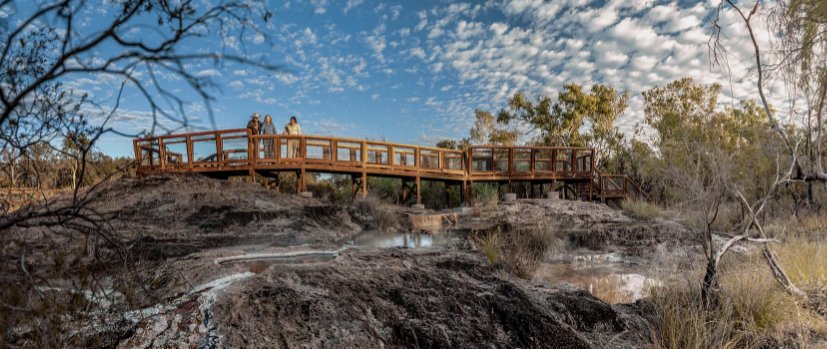|
Natural thermal springs are produced by geothermally heated groundwater and provide opportunities for studying microbes that may represent analogues of life on ancient Earth or even other planets. In this project, we will characterise the microbial communities in a recently explored Australian hot spring ecosystem. |
|
We aim to study the microbial communities contributing to the formation of the unique mounded travertine terraces and miniature stromatolites at Talaroo Hot Springs. Travertine, a terrestrial limestone, is formed through an interplay of chemical and biological processes. The water chemistry at the springs has been characterised, but the microbial communities have remained largely unexplored. Therefore, we propose to:
The proposed aims will allow us to establish a baseline of the microbial community in an effort to better understand and to protect the unique Talaroo Hot Springs ecosystem.
The unique Talaroo Hot Springs ecosystem (image courtesy https://www.talaroo.com.au/) |



